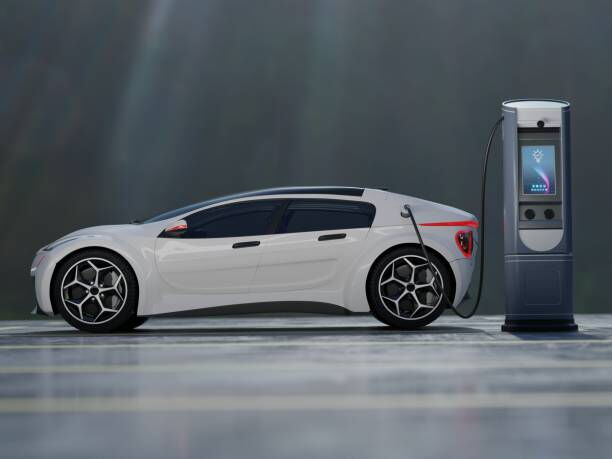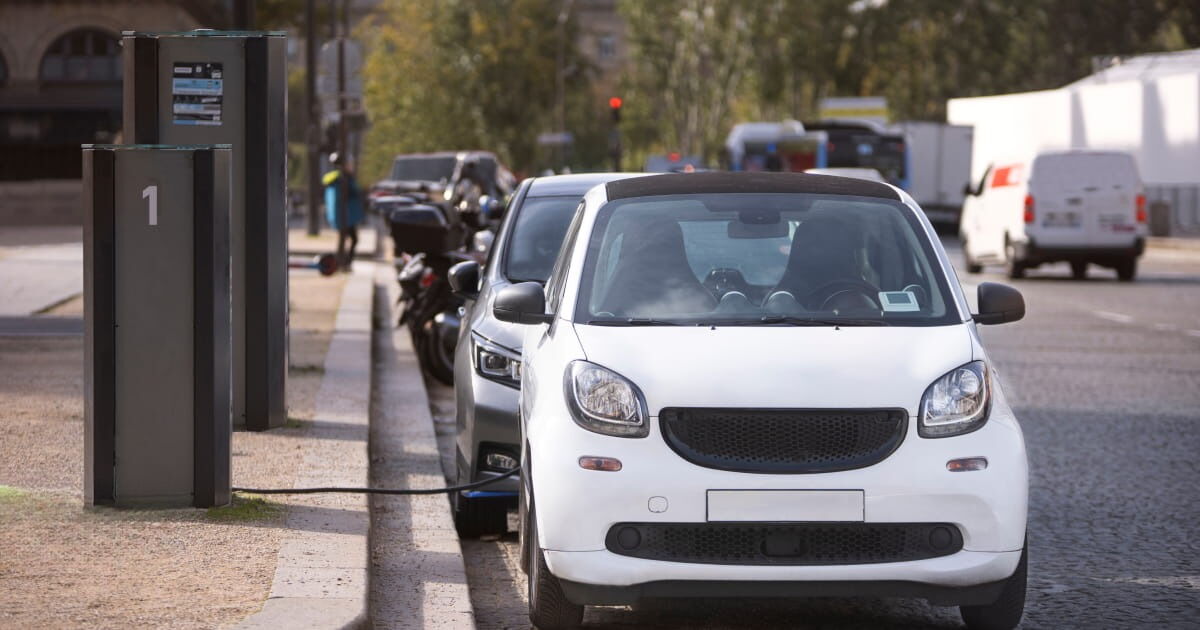One of the greatest obstacles standing between electric vehicles and mass adoption is range anxiety — the worry that a battery will run out before reaching a charging station. Ultra-fast EV charging infrastructure is proving to be a powerful solution to this issue. By dramatically cutting charging times, ultra-fast chargers make long-distance travel with EVs more practical, improving convenience for drivers and helping reduce one of the psychological barriers to going electric.
These super-high-speed chargers are especially critical along highways and major travel corridors, where drivers don’t want to lose time waiting for a recharge. But building that kind of infrastructure isn’t simple. Ultra-fast EV charging systems must convert high-voltage alternating-current (AC) power from the grid into direct-current (DC) electricity suitable for charging a battery — and they must do that at much higher power levels than conventional chargers. That requires advanced power electronics, robust grid connections, significant investment, and often additional technologies like power boosters or energy-management systems to avoid overloading the electrical network.
Below, we explore what ultra-fast charging really means, how it’s evolving, its economic implications, and how China is pushing the envelope — and what that might mean globally.

Ultra-fast EV charging — sometimes called High-Powered Charging (HPC) — refers to charging stations capable of delivering very high power levels to an EV in very short time frames. While slower chargers operate at tens of kilowatts (kW), ultra-fast units operate in the range of 150 kW through 350 kW (and beyond). The precise thresholds depend on region and marketing, but essentially these are chargers designed to replenish a battery much faster than the more common Level 2 or lower-power fast chargers.
Some cutting-edge systems are even pushing into the megawatt-level charging territory. Initially this level was intended for heavy-duty electric vehicles (for instance, trucks or buses), but recent developments from battery makers and vehicle manufacturers have pushed toward bringing megawatt charging capability to passenger cars as well. In other words, what once was domain of large vehicles is beginning to trickle into regular EV infrastructure.
Because these chargers deliver such large amounts of energy so quickly, they demand more from the local distribution grid (higher currents, stringent cooling, tighter safety), more sophisticated electronics (power conversion, DC-DC boosting, thermal management), and more careful site planning. They are inherently more complex and costlier to build than slower chargers — but they promise substantial payoffs in convenience and adoption.
Charging speed has moved from being a fringe concern to a central selling point for EVs. As charging speeds increase, consumer comfort with the idea of EVs rises. In recent years surveys have shown that worries around charging time have dropped substantially among prospective buyers. What was once among the top two hesitations about EV ownership has fallen further down the list as confidence in ultra-fast charging capabilities has grown.
More significantly, first-time EV buyers are increasingly citing the presence or availability of ultra-fast chargers as a factor in their decision to go electric. In effect, the reduction in charging time isn’t just a technical improvement — it has become part of the value proposition of owning an EV. The milestone of being able to charge in around 15 minutes or less has psychological weight: once people believe that a quick recharge is nearly as fast as a fuel‐stop, adoption accelerates.
For operators of charging networks, ultra-fast charging presents both challenges and opportunities. On the cost side, each ultra-fast charging station can cost hundreds of thousands of dollars — estimates range from roughly $100,000 up to $300,000, depending on geographic location, grid connection complexity, permitting, and whether on-site power‐management or storage systems are required.
Yet the business case is improving. Utilization rates for ultra-fast stations have risen noticeably over recent years. Where three years ago many ultra-fast chargers might have served 10 to 15 vehicles per day, current usage numbers are more like 30 to 40 vehicles per day. That increase in throughput helps to justify the high capital expenditures, improving return on investment even though these sites remain expensive to build and maintain.
Additionally, charging-network operators are leveraging pricing strategies (time-based fees, demand-based pricing, loyalty programs) and integrating with property or business partners (e.g. retail stops, rest areas, or highway service plazas) to increase visibility, usage, and revenue. As utilization continues to rise, the economics of ultra-fast charging becomes more attractive, making further expansion more viable.
Ultra-fast charging is not just about powering cars — it is reshaping transportation infrastructure, urban planning, energy markets, and even commercial real estate. Some of the broader economic effects include:
Highway infrastructure development: Fast charging hubs become critical waypoints on interstate corridors, influencing where rest stops, shopping, and amenities develop.
Grid and utility impacts: Utilities must upgrade local distribution systems to handle the surges that ultra-fast charging stations demand. In some cases, utilities invest in stronger transformers, upgraded cables, or local energy storage to smooth out demand peaks.
Real estate value shifts: Properties close to ultra-fast charging hubs may become more valuable or more attractive for businesses (restaurants, convenience stores, lodging). Conversely, land use planning may shift to anticipate vehicle charging infrastructure as part of transportation nodes.
Automotive industry incentives: Automakers emphasize fast-charging architecture (such as higher-voltage vehicle platforms) as a selling point. Investments in battery design, cooling systems, and charging compatibility feed back into vehicle R&D budgets and supply chains.
Together, these changes help knit ultra-fast charging into the broader transportation economy. It’s no longer an add-on; it’s becoming an integral piece of the EV ecosystem.

China is quickly emerging as one of the world’s leading laboratories for ultra-fast charging technologies. The country is seeing fierce competition and rapid deployment — both in the vehicles themselves (which must be compatible with high-power charging) and in the infrastructure required to support them.
One of the high-profile launches came in August 2022, when the Chinese automaker XPeng introduced its S4 supercharging technology. The system promises a five-minute charge that delivers approximately 210 kilometers (about 130 miles) of range for its G9 SUV — a level of performance that enters the same conversation as Tesla’s V3 Superchargers or Porsche’s Turbo Charging systems. That announcement drew attention not just within China but around the world, signaling that Chinese automakers are aggressively pushing the frontier.
Since then, multiple Chinese OEMs and charging-infrastructure firms have rolled out or announced ultra-fast charging innovations. These efforts reflect a broader strategy: aggressively reduce charging downtime, tighten integration between vehicles and charging networks, and promote long-distance EV driving with minimal inconvenience.
A key enabler for ultra-fast charging is the EV’s internal electrical architecture. Historically, many EVs have operated on 400-volt systems — which are adequate for moderate fast charging but begin to limit how quickly energy can safely flow into the battery. Upgrading to 800-volt (or higher-voltage) platforms allows more power to be delivered with lower current, which reduces heat, improves efficiency, and enables much faster charging rates without overstressing cables or battery cooling systems.
In China, automakers have increasingly embraced 800-V (and above) designs in battery packs, inverters, onboard charging electronics, and thermal management systems. That shift in hardware design is tightly coordinated with charging network development — the cars are built to accept ultra-high-power, and the charging stations are built to deliver it.
Because higher-voltage architectures reduce losses and stress during high-power charging, they support peak charge rates (e.g. 300 kW and beyond). Some of the newest Chinese systems now push even higher, with charging units rated for 640 kW or more. Although such ultra-high-power units remain rare elsewhere (for instance in Europe), they’re becoming more common in parts of China, especially along key corridors and in urban/high-traffic regions.
China’s relative advantage in this space comes from several factors:
Many Chinese automakers are vertically integrated (manufacturing batteries, designing chargers and deploying infrastructure). That synergy allows tighter coordination between vehicles and charger specifications, accelerating development of high-power compatibility.
National and regional policies often support rapid deployment of EV infrastructure, offering subsidies, streamlined permitting, and public investment in grid upgrades in parallel with EV rollout.
China’s domestic EV market is enormous and highly competitive. Automakers see charging speed as a differentiator, so there’s strong incentive to innovate faster, deploy earlier, and scale quickly.
Some regions benefit from strong grid investment, high-capacity substations, modern smart-grid systems, and streamlined utility collaboration — all of which help absorb the surges from ultra-fast charging roll-outs.
For Western automakers and infrastructure providers, China’s example offers valuable lessons: design charging-compatible vehicle architectures from the ground up, partner closely with utilities, consider policy-driven incentives, and focus on charging speed as a core part of the consumer proposition rather than an optional add-on.
Despite the progress, significant hurdles remain:
Thermal management: Delivering hundreds of kilowatts of power in a short burst generates a lot of heat — in the cable, the connector, the battery pack, and the power electronics. Effective cooling (liquid or advanced air cooling), smart charge-rate tapering, and temperature monitoring systems are essential to avoid damaging batteries or infrastructure.
Battery longevity: Frequent ultra-high-power charging could stress battery cells more than slower charge cycles. Automakers must balance fast-charge capability with long-term battery health and durability.
Grid capacity & stability: In many regions, the local grid was not originally designed for repeated, high-power draw at charging hubs. Upgrading transformers, energy storage (e.g. buffer batteries), or grid re-engineering may be needed, especially in rural or under-developed areas.
Standardization & interoperability: Charging standards differ across regions (plug types, communication protocols, billing systems). Vehicles with high-voltage architectures must still support interoperability with existing or lower-power chargers, and charger networks must support multiple protocols (e.g. CCS, GB/T, CHAdeMO depending on region).
Scaling ultra-fast charging from flagship corridors to widespread national networks is another challenge. Some of the issues include:
Permitting & regulation: Local governments may require new safety rules for very high power installations, or have strict siting and environmental requirements that slow deployment.
Cost & financing: The high up-front cost remains a barrier, especially in less densely populated regions. Network operators may need creative financing, public–private partnerships, or government incentives to expand coverage beyond major highways and urban centers.
User behavior & pricing models: As ultra-fast charging becomes more available, charging network operators need to optimize pricing strategies (e.g. premium pricing for speed, subscription models, membership discounts) to balance utilization, revenue, and fairness.
Looking ahead, we can expect several trends:
More megawatt-level charging — especially for commercial fleets, trucks, and possibly next-generation passenger EVs as battery technology continues improving.
Wider roll-out of 800 V+ vehicle platforms among global automakers, not just in China.
Energy-storage-coupled charging stations that buffer grid demand peaks by storing electricity locally (e.g. via onsite battery storage), reducing strain on local distribution systems and enabling faster ramp-up.
Integration with renewable energy and smart grid features to minimize carbon impact and operating costs, and to take advantage of time-of-use pricing or grid-load-balancing strategies.
More visible, reliable charger networks along long-distance travel corridors — making EV roadtrips nearly as convenient as traditional ICE fueling (at least in terms of time at the station).
Regulatory incentives and standard harmonization aimed at making ultra-fast charging infrastructure more uniform, safe, and accessible across regions.
Ultra-fast EV charging is no longer a fringe technology or distant promise — it’s rapidly becoming a core component of the future of transportation. By slashing recharge times, boosting adoption, and reshaping how we think about vehicle infrastructure, ultra-fast charging is helping break down one of the biggest barriers to wide-scale electric mobility: time.
As charging continues to evolve, the interplay between vehicle architecture (such as high-voltage platforms), charging-station technology (such as megawatt-class chargers), and grid modernization will determine how quickly and smoothly the world transitions to electric transportation. China may currently be leading the charge, but the global race is on — and ultra-fast charging will be a crucial battleground in the journey toward emissions-free mobility.
